Welcome to On Verticality. This blog explores the innate human need to escape the surface of the earth, and our struggles to do so throughout history. If you’re new here, a good place to start is the Theory of Verticality section or the Introduction to Verticality. If you want to receive updates on what’s new with the blog, you can use the Subscribe page to sign up. Thanks for visiting!
Click to filter posts by the three main subjects for the blog : Architecture, Flight and Mountains.
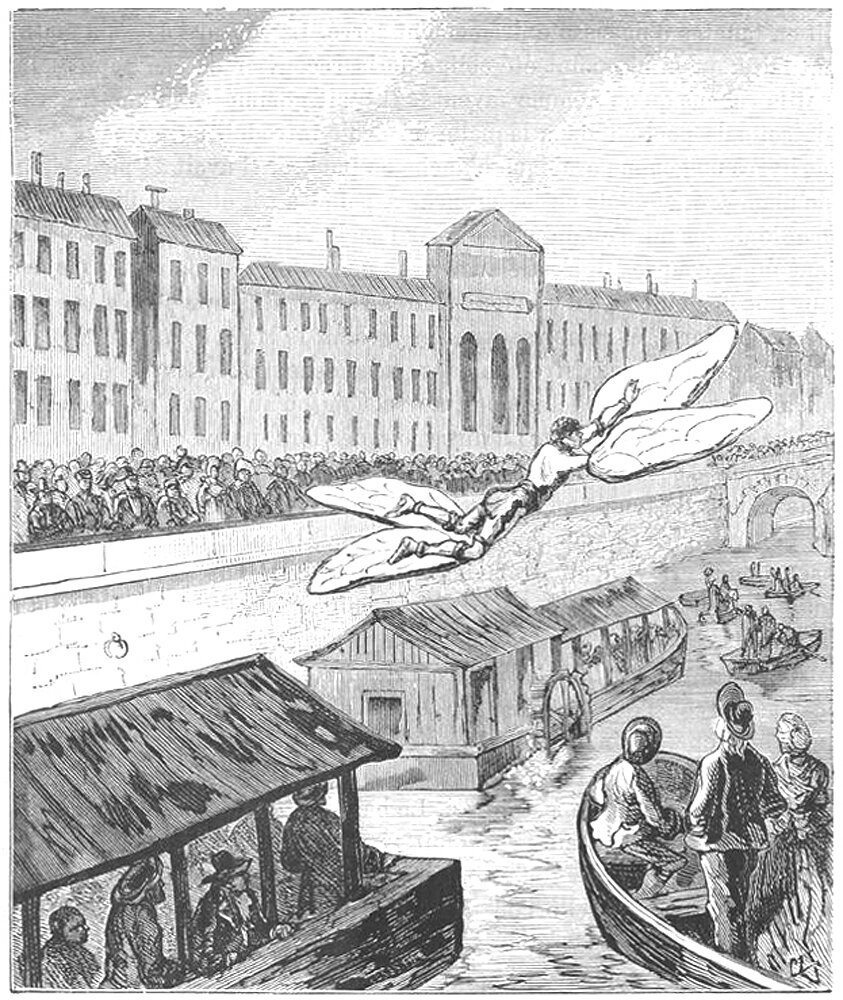
Marques de Bacqueville's Leap of Faith
Pictured above is Marquis de Bacqueville, an eccentric French nobleman best known for his attempt at human flight in 1742. His full name was Jean-François Boyvin de Bonnetot, and he was born in Rouen in 1688. Details about his attempted flight are varied, but apparently on March 19, 1742 in Paris, de Bacqueville announced his intention to fly from one side of the river Seines to the other.

Alexandre Goupil's Sesquiplane
Alexandre Goupil was a French engineer, best known for designing and testing a flying machine in 1883. The machine was a sesquiplane, which is a plane with two sets of wings, one much smaller than the other. It was to be powered by a steam engine housed in a bulbous, streamlined body, which powered a single propeller at the front of the craft. The machine had a wingspan of 6 meters (20 feet), and had space for an operator to stand below the body.

Leonardo da Vinci and Human Flight
Leonardo da Vinci is one of the most influential and prolific thinkers in human history. He is most famous for his paintings, but the man was a true polymath, and he studied and thought about myriad subjects. There is an obsessive curiosity that surrounds his oeuvre, and there doesn’t seem to be a limit to what he would explore. For our purposes here, we’ll focus on his quest for human flight, which he pursued from the late 1480’s to the mid 1490’s.
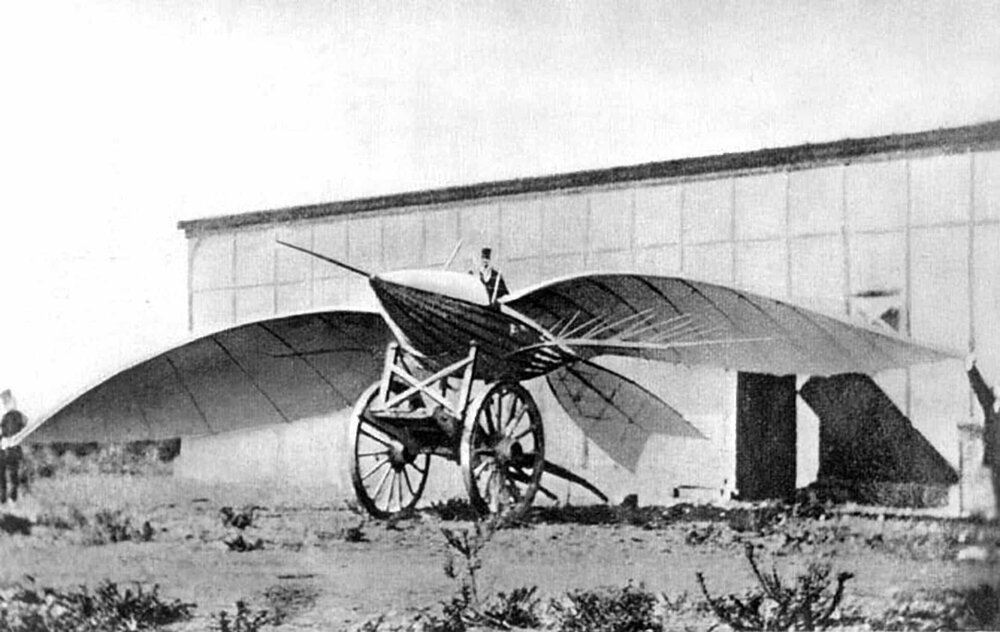
Jean-Marie Le Bris' Artificial Albatross
Pictured above is a photograph of Jean-Marie Le Bris’ flying machine, called L'Albatros artificiel, which is French for Artificial Albatross. This is the first recorded photograph taken of a flying machine, and it shows Le Bris in the pilot seat of his glider, resting on a wooden cart before take off. This is the second version of his craft, called Albatross II, which was modified from the original version with refinements.
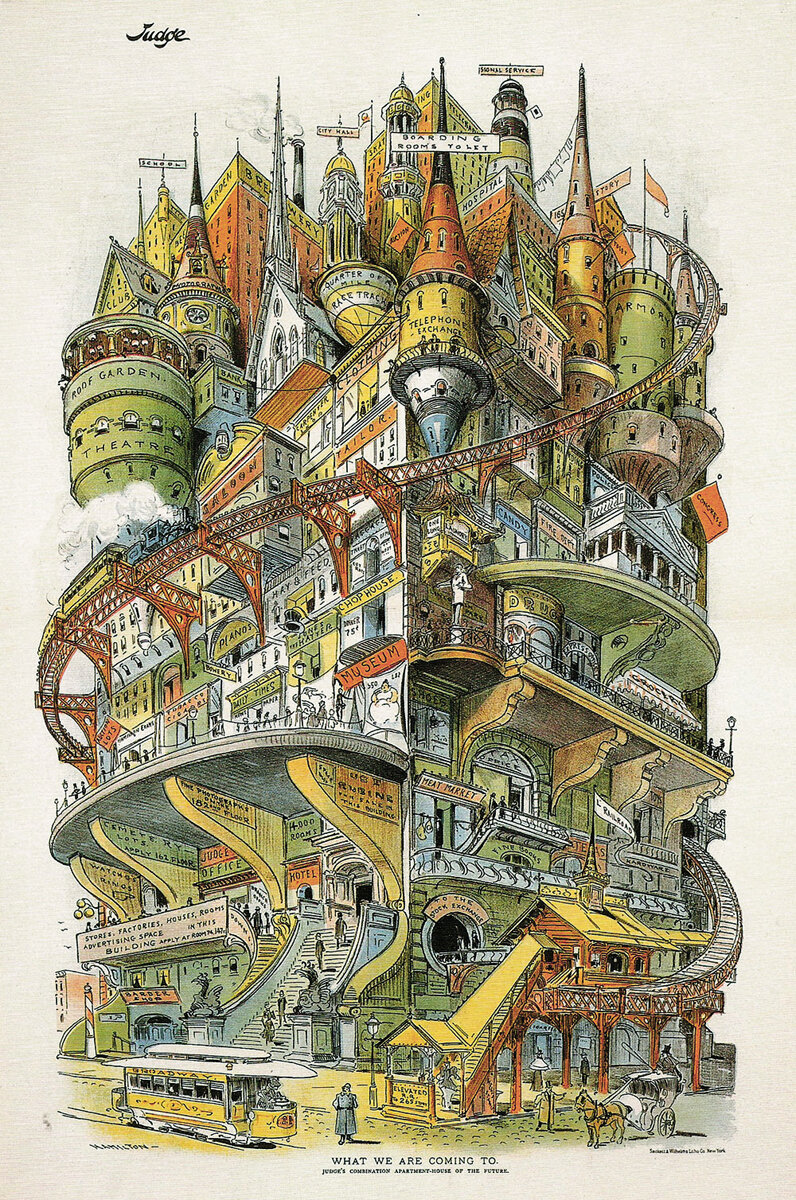
What We Are Coming To
If you wanted to cram every possible building type into a single structure, what might that structure look like? It’s a hell of a design problem, and the image above shows one artist’s idea of what it might look like. It’s an illustration by Grant E. Hamilton, called What We Are Coming To. It appeared in an 1895 issue of Judge magazine, with the headline ‘Judge’s combination apartment house of the future.’
“You can tell what’s informing a society by what the tallest building is ... when you approach a modern city, the tallest places are the office buildings, the centres of economic life."
-Joseph Campbell, American literature professor and author, 1904-1987
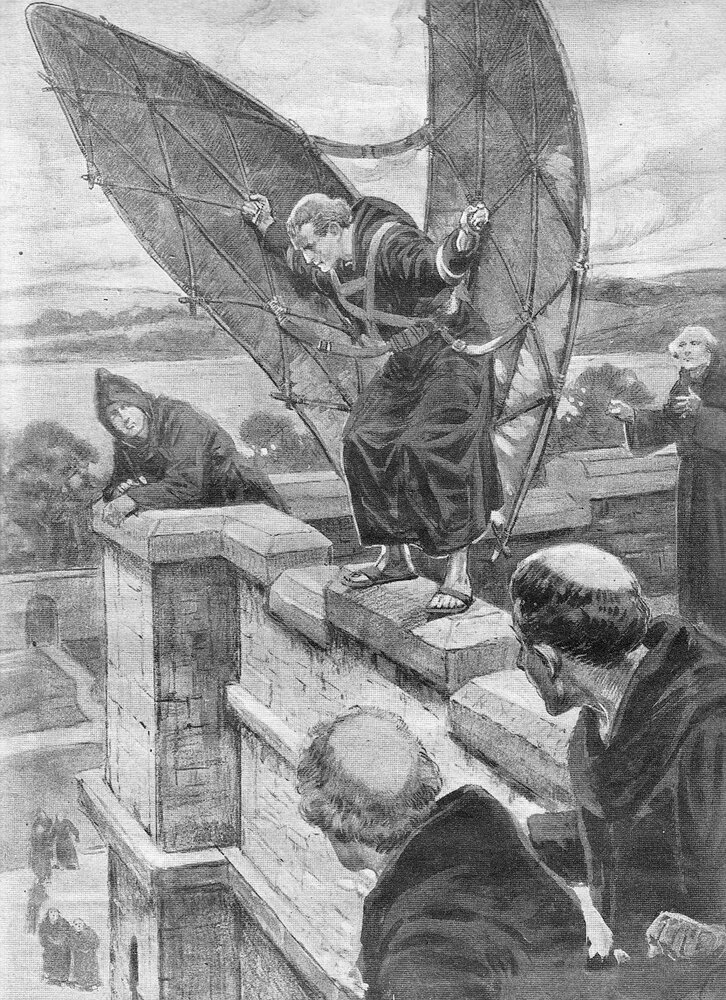
Eilmer of Malmesbury, The Flying Monk
Pictured above is Eilmer of Malmesbury, an English Benedictine monk who lived sometime in the early 11th century. He is best known for an alleged attempt at human flight, which marks one of the earliest recorded attempts of its kind. Unfortunately, the details of his life have been lost to time, except for a single passage in William of Malmesbury's book Gesta Regum Anglorum. William describes Eilmer as a bold youngster who, inspired by the Greek myth of Daedalus and Icarus, believed he could fly by constructing a pair of wings and attaching them to his hands and feet.

Jakob Degen’s Flugmaschine
This is Jakob Degen’s design for his Flugmaschine, an ornithopter that was meant to fly with the power of human muscles. Degen was a Swiss watchmaker who became interested in human flight in the early 1800’s. He designed the first prototype of his Flugmaschine in 1807, which is pictured above. It was rather simple to operate; the pilot would stand on a rigid metal frame and move a horizontal bar up and down in order to flap the wings.

The Ancient Chullpa of Peru
Where do we go after we die? This question has been on our minds since pre-history, and we’ve come up with myriad stories and strategies to address it. Pictured above is an ancient chullpa, which is an ancient, above-ground tomb built by the Aymara people in Peru and Bolivia. The Aymara were an indigenous people who became a subject people of the Inca in the 15th and 16th century.

Bartolomeu de Gusmão's Passarola Airship
Many of the oldest ideas for flying machines imitated birds in some way. This proposal, by Brazilian-born Portugese inventor Bartolomeu de Gusmão, fits squarely into this category. His flying machine, called Passarola, translates to bird in Portugese. Gusmão was building on the ideas of Francesco Lana de Terzi, who previously drew up plans for a flying ship, complete with sails and a hull.

Francesco Lana de Terzi's Aerial Ship
Francesco Lana de Terzi is sometimes referred to as the Father of Aeronautics. He was an Italian Jesuit priest, a professor of physics and mathematics, and he was intrigued with human flight. In 1670 he published Prodromo, a book containing myriad ideas and inventions, the most famous of which was the design for a flying ship.
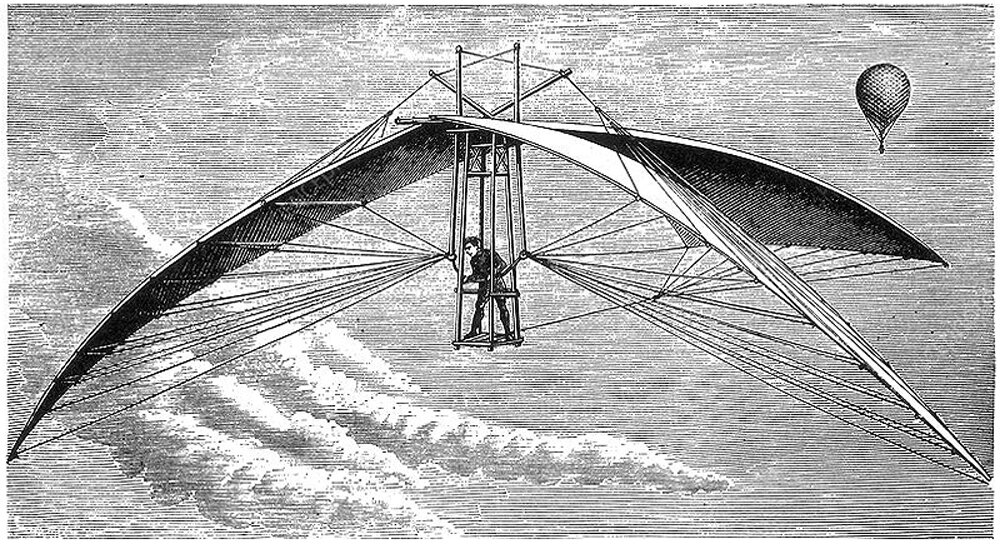
Vincent de Groof's Ornithopter
This is Vincent de Groof’s design for an ornithopter, built and tested in Bruges and London in the 1870’s. Details about de Groof’s life are sketchy, and newspaper articles from his day tend to contradict themselves. One consistent fact is that he was called The Flying Man. His goal was to achieve flight, and he believed it was possible for a human to fly by imitating the flight of a bird.
"Space isn't remote at all. It's only an hour's drive away if your car could go straight upwards."
-Fred Hoyle, British astronomer, 1915-2001
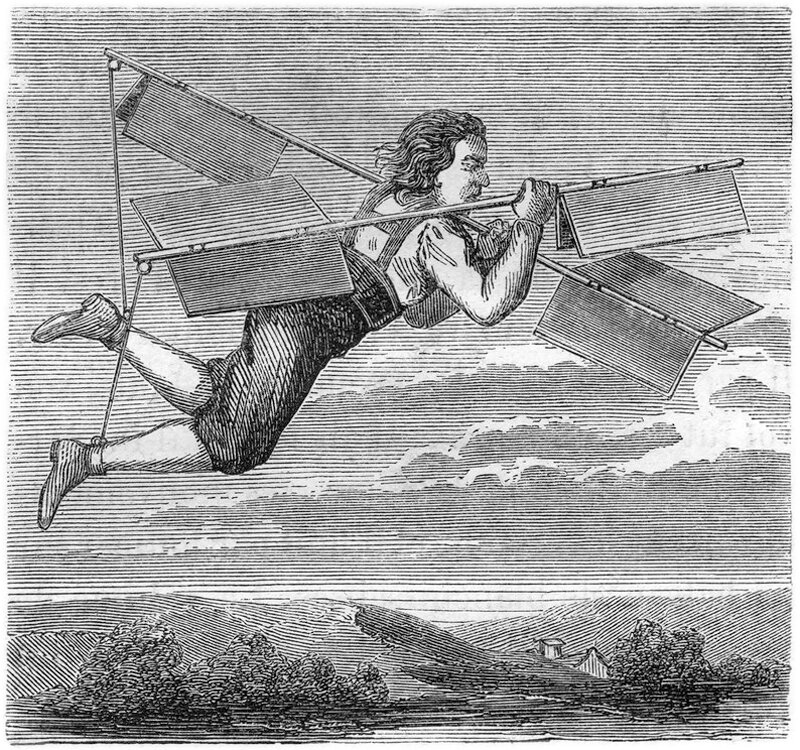
Besnier's Flying Apparatus
Many early attempts at flight were taken by people who had no formal background in the subject. Pictured above is Besnier, a locksmith from Sablé, France. In the 1670’s, Besnier had become obsessed with flight, and sometime around 1678 he built and tested an apparatus to mimic the beating of a bird’s wings.

The Tallest Building in The South
To hell with context. The artist behind the postcard above must have been thinking something similar when conjuring up the fantasy that was to be The tallest building in the South. I use the term artist, rather than architect or designer, because the building depicted hasn’t been designed, but rather imagined. It’s a non-functional idea for a tall building, rather than an actual building proposal.
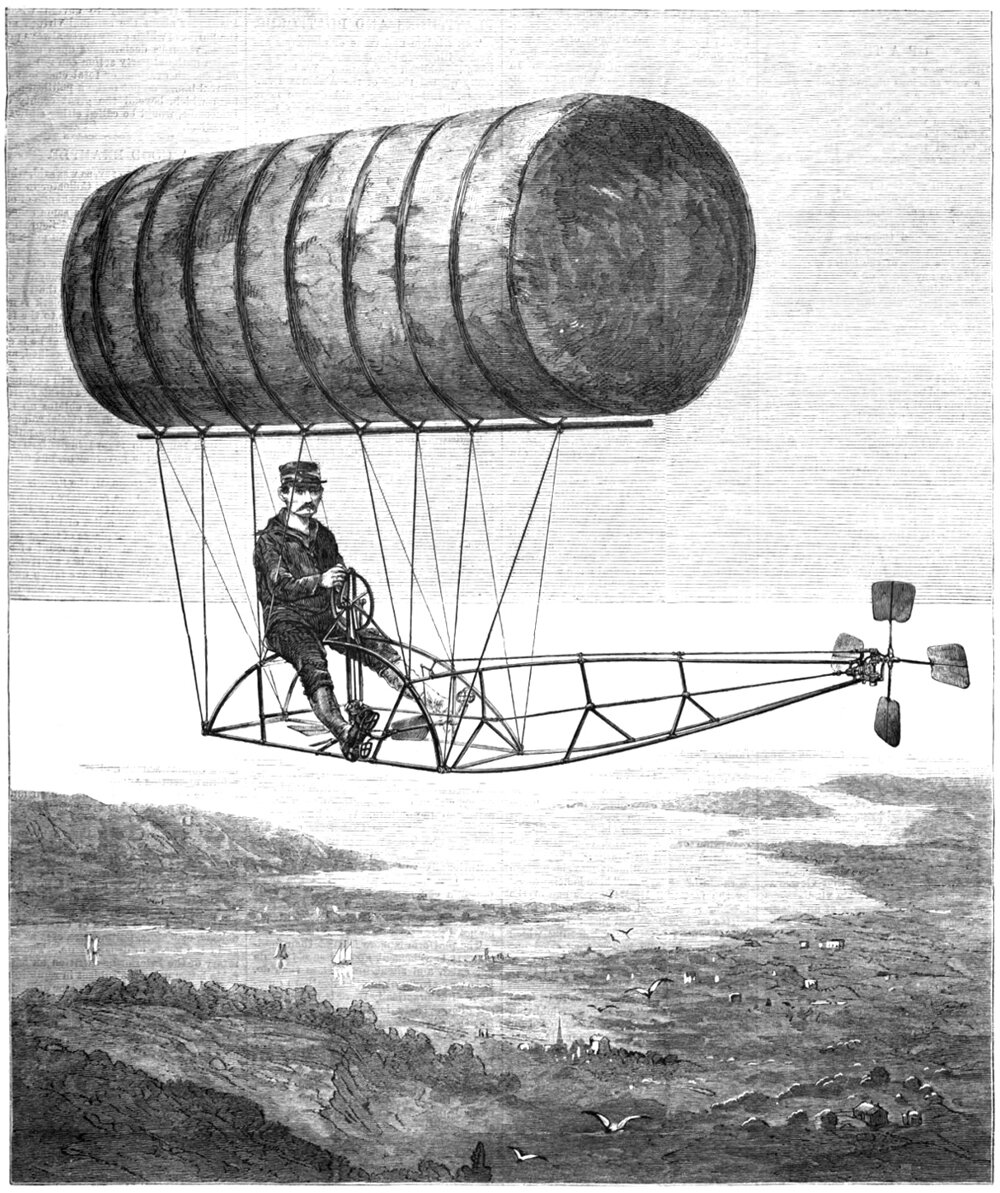
Charles F. Ritchel's Dirigicycle
This is the cover of Harper’s Weekly from July 13th, 1878. The issue featured an etching of a man sitting on a tubular frame, suspended high in the air by what looks like an elongated bail of hay. The man pictured is Charles F. Ritchel, and he’s piloting his design for a dirigible. A dirigible is an airship capable of being steered (it comes from the Latin word dirigere, which means ‘to direct’), and the bail of hay is in fact a bag of rubberized fabric called ‘gossamer cloth’, filled with hydrogen gas.
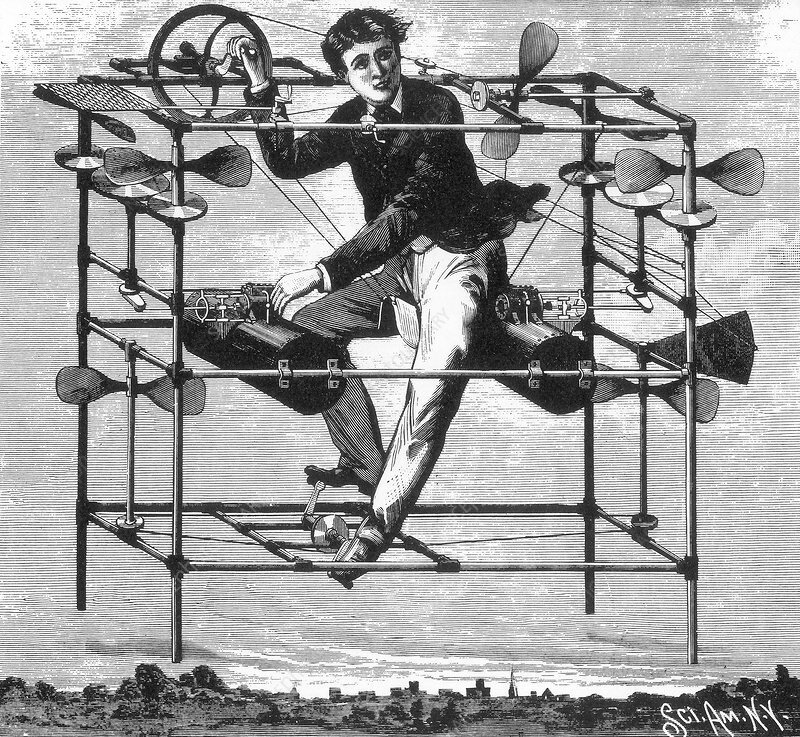
William O. Ayres' Aerial Machine
There have been myriad ideas and inventions for flying machines over the years, and this one caught my eye for various reasons. It’s a design by William Orville Ayers from 1885, and it’s called the New Flying Machine. Ayers was a physician who was interested in the natural sciences, particularly ornithology (the study of birds). This interest in birds no doubt expanded to flight, and ultimately led to the design for a flying machine pictured above.
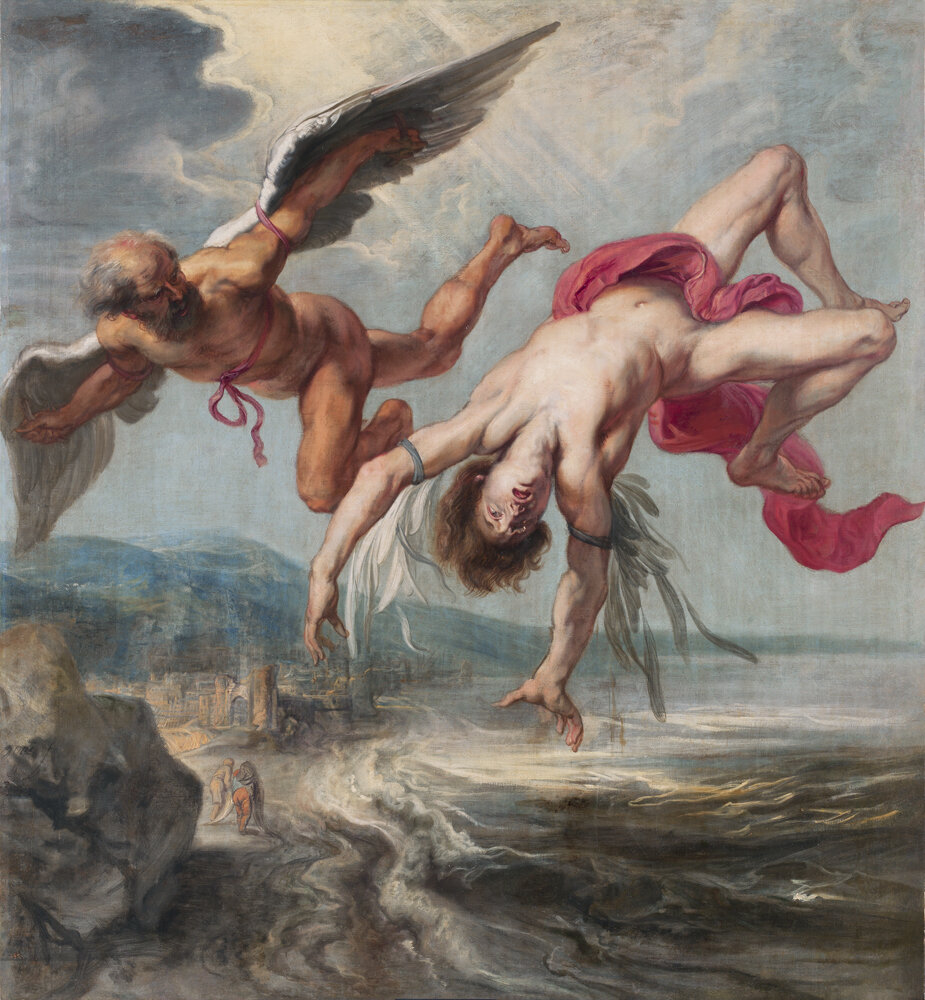
Liftoff and the Freedom of Flight
Flight has captivated humanity since pre-history. The space above our heads represents freedom, and flying through it represents an escape from our surface-based lives. To fly is to break free of the shackles of a surface-based existence and achieve a higher level of being.
"The desire to fly is an idea handed down to us by our ancestors who ... looked enviously on the birds soaring freely through space ... on the infinite highway of the air."
-Wilbur Wright, inventor and aviation pioneer, 1867-1912

Verticality, Part XI: Breaking the Box
A rebellion against spacecraft and efforts to humanize the tall building
The human experience of stacked, identical floors on top of one another was foreign to our surface-dwelling nature. The disconnected, isolated experience of International Style buildings took us up to the sky, but cut us off from everything surrounding us. This lack of variety in tower floors and the monotony of box-like tower forms would begin to be challenged by architects. This signaled that we needed to humanize our experience of Verticality again. Instead of monotonous boxes, towers began to see their forms eroded away in order to create more varied experiences within them. We needed to recreate the surface in the sky.
